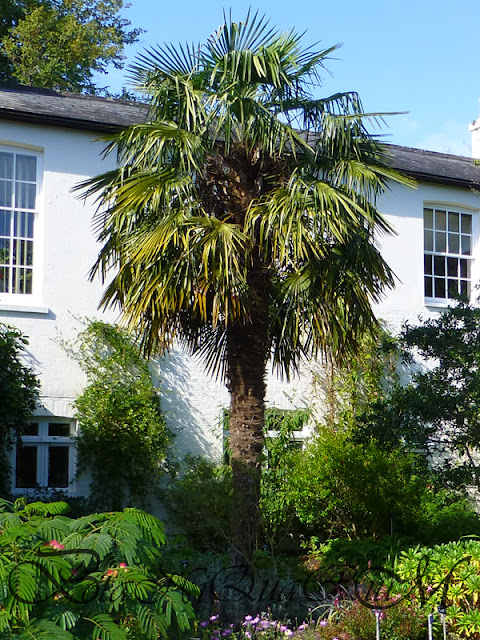 |
~ CHUSAN PALM ~
A tall and hardy palm that survives short periods of frost and snow. Exotic asset to any garden, strongly architectural.
|
TRACHYCARPUS FORTUNEI
ARECACEAE
EN: Chusan Palm, D: Chinesische Hanfpalme, FR: Palmier de Chine, ESP: Palmera excelsa, ZH: 棕榈
Description:
Evergreen palm the size of a medium-sized tree, apparently the hardiest palm in the world, dioecious, although sometimes both sexes on same tree, usually unbranched and single-stemmed although sometimes appears as multi-stemmed specimen, with trunks covered in tough fibres and old leaf stalks, at the top bearing up to 1m wide, rounded fan-shaped, dark-green leaves, on long stout stalks, exotic leaves palmately divided into linear segments, tips of those segments usually droop as soon as leaf is fully grown, old leaves turn brown and create a skirt around the top crown, female plants carry close to the leaf bases pendulous panicles of small pale yellow flowers that appear in early summer, followed by globose blue-black fruits if a male tree has been near to pollinate.
Introduced by Philipp von Siebold in 1830 and by Robert Fortune in 1849.
Height: up to 20m (up to 70ft)
 |
| In groups like this they really leave an impression, making you feel on holiday. |
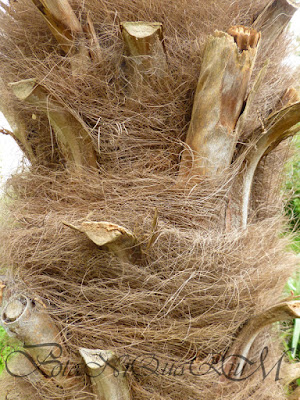 |
 |
| The trunks are covered in thick, tough hair. |
A new leaf emerging from the central crown. |
Maintenance:
Generally no pruning required, however a couple of jobs will keep Trachycarpus fortunei neat and tidy. Flowering will drain its energy so if perfect condition and leaf growth is required any flower stalks should be removed as soon as they appear, also removing older leaves as they turn yellow or brown is also recommended to enhance the plant's appearance. The hairy layers around the trunk can be removed, although this will be a tough job requiring a strong sharp knife, it really enhances its architectural effect. This will not harm the plant or effect its hardiness, it is merely an aesthetic improvement.
 |
| It is recommended to cut the old leaves (brown skirt) off as it will look much tidier. |
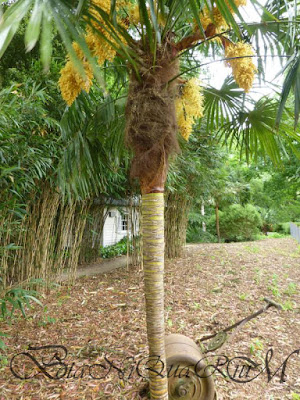 |
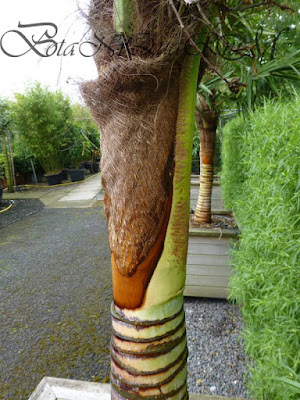 |
| The trunk without hair reveals a clean waxy stem. |
Hairless trunk close up. |
Propagation:
Best done by seeds, sown at no less than 25ºC. Will self-seed when planted in groups and in ideal conditions, certainly in some Southern English gardens.
Meaning of plant name:
TRACHYCARPUS: shaggy/rough fruited (from greek)
FORTUNEI: named after Robert Fortune (1812-1880), Scottish plant collector for the Royal Horticultural Society (RHS) in China
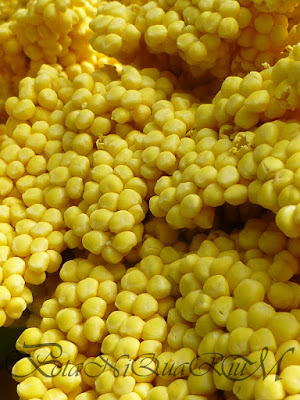 |
| Flower buds close-up. |
Origin: North
Myanmar to
Central China
Growing conditions:
Easiest palm to grow, copes with a wide range of conditions, thrives on nutritious soils as it can be a hungry plant, grows on loam, chalk or sand in any pH, acid or alkaline, heavy waterlogged soils should be avoided, boggy conditions can be detrimental to the roots, tolerates clay soils if drainage has been thoroughly improved, enrich poorer soils with an annual spring application of leaf mould or similar, prefers full sun but will also grow well in partial shade, the shadier the site the slower Trachycarpus fortunei will grow, should be protection from wind as it will shred the leaves and make it look horrible, otherwise fine in windy conditions.
Hardiness: only established specimen can withstands short periods of
H5 - Hardy in most places throughout the UK even in severe winters (-15 to -10°C)
Pests and Diseases: generally no problems
Other useful information:
-
 |
| Self-sown one and two year old seedlings, harvested from underneath the tree. |
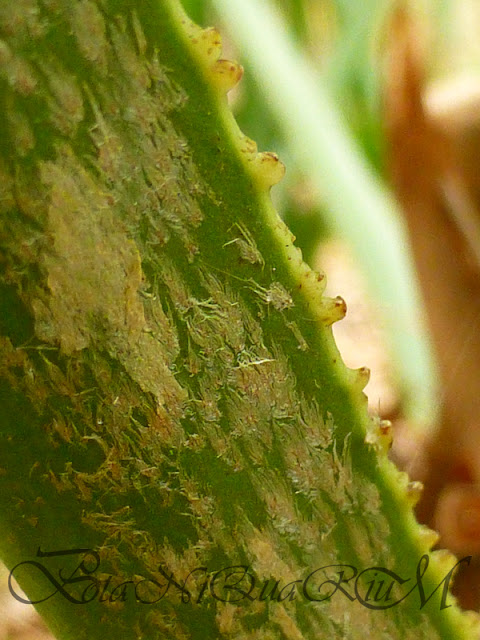 |
| Leaf stalk close up. |
 |
| A young Trachycarpus fortunei. |
 |
| Strongly architectural Trachycarpus fortunei is a fantastic feature in any garden. |
 |
| Trachycarpus fortunei has proven to be the hardiest palm in the world. |
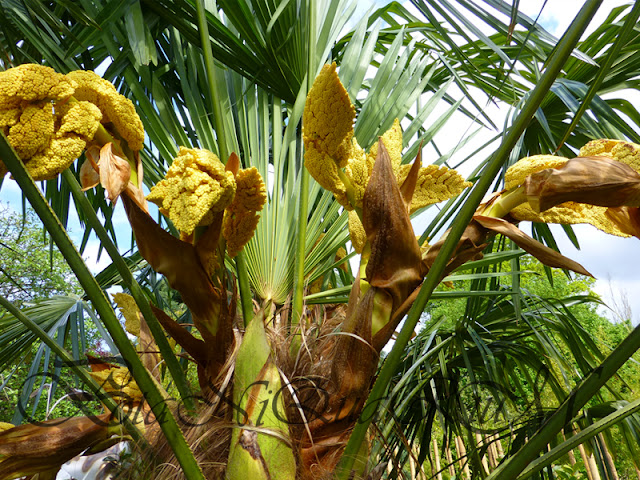 |
| Flowers appear in early summer but will drain a lot of the plant's energy. |
 |
| Flower stalks start off more upright but then soon become pendulous as the flowers weigh it down. |
 |
| Trachycarpus fortunei in early summer, Hampshire, UK |
 |
| Trachycarpus fortunei, approx.40yrs old |
Have a look at
Related Species

















